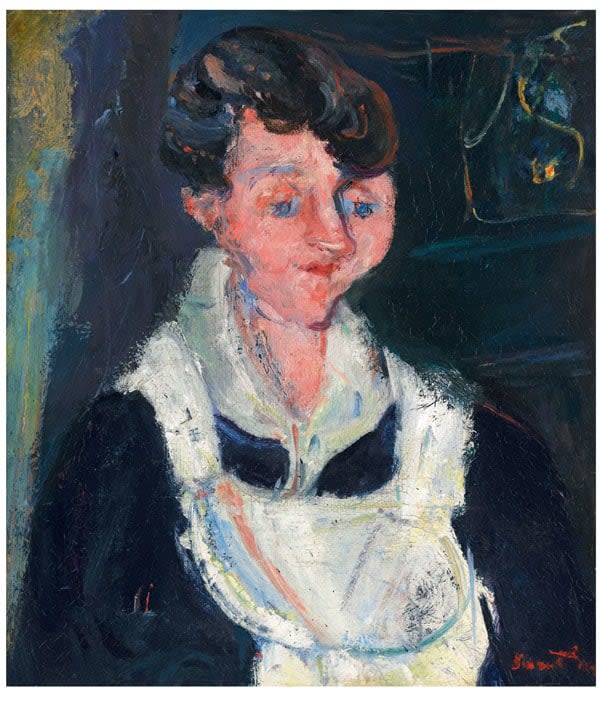To celebrate the museum’s acquisition of Soutine’s La Soubrette, c. 1933, the exhibition, Chaïm Soutine and his Contemporaries: from Russia to Paris, unveils this important portrait, together with a small selection of work from the Ben Uri collection by a number of Soutine’s peers: all either born (like Chagall) within Russia, or (like Soutine himself) in countries then within the Russian Pale of Settlement. In flight from the poverty, persecution and restrictions of their native lands, they converged on Paris, the ‘City of Light’, in search of personal and artistic freedom, mostly (though not exclusively) in the first two decades of the twentieth-century. There they formed part of the loose association of émigré artists known collectively as the École de Paris, the majority (among them Chagall, Dobrinksy, Henri Epstein, Kikoïne, Isaac Lichtenstein, Lipchitz and Soutine) living and working together in the collection of studios known as La Ruche (‘the Beehive’) near the old Vaugirard slaughterhouses of Montparnasse. Many (probably including Ben Uri’s founder Lazar Berson) also studied under Professor Cormon at the École des Beaux- Arts and exhibited (like Chagall) at the progressive salon d’automne; together they had a profound influence on twentieth-century figurative art.
As Avram Kampf has observed, “Jewish artists, because of their common language and common background, tended to meet frequently. Some historians speak about an enclave of Jewish artists, others about a Jewish School of Paris. The gathering of a relatively large number of Jewish artists in Paris is a fact of twentieth-century art and of Jewish social and cultural history”. Many stayed on (often applying for French citizenship) until the events of the Second World War forced them to flee or to hide; a much smaller number remained after the Liberation. Nonetheless, the importance of this group (beyond the influence of leading figures Soutine and Chagall) is perhaps best demonstrated by the second wave of the École de Paris (outside the scope of this exhibition), which rose up in the aftermath of the Second World War.
The credit lines reflect the ownership of artworks at the time of the original display.



























